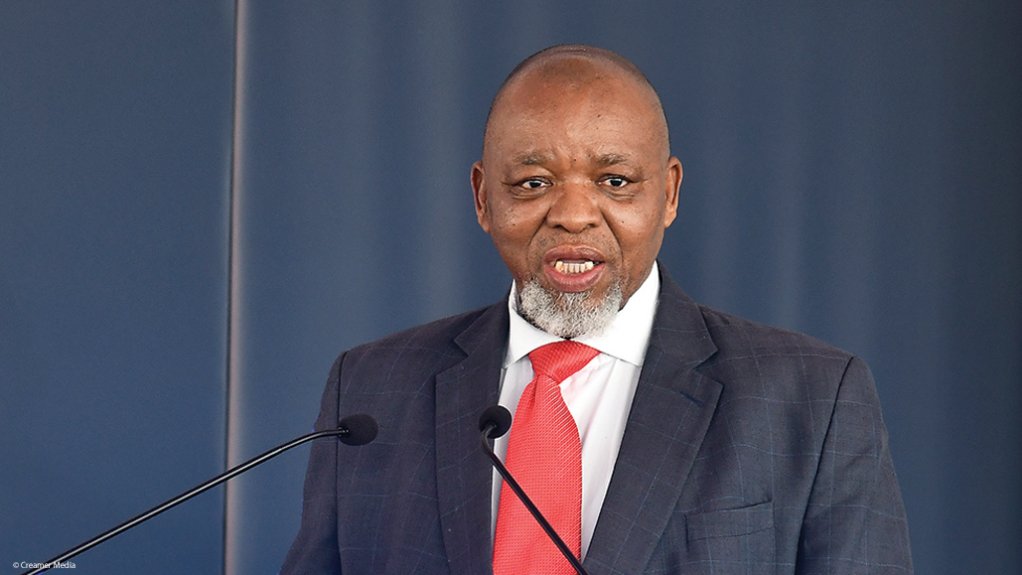JOHANNESBURG (miningweekly.com) – The introduction of an electronic cadastral system to record and enable online access to mining data is imminent, Mineral Resources and Energy Minister Gwede Mantashe emphasised in an interview with Radio 702 host Clement Manyathela on Thursday.
Mantashe disclosed to Manyathela that agreement had been reached with the State Information Technology Agency (SITA) for the introduction of a cadastral system – a set of records and maps that describe the ownership, boundaries, value, and use of land parcels within a jurisdiction.
The announcement of the cadastral system service provider was imminent and the introduction of the system would accelerate the pace of processing mineral rights, Mantashe added when questioned on the issue of South Africa’s Department of Mineral Resources and Energy (DMRE) having sufficient administrative capacity to operate it efficiently.
“You will be able to apply and receive the receipt. If you're applying, for example, on a farm that has already had an application, you’ll be able to see that yourself.
“I want to use 2024 as a year to clear backlogs. By the end of 2024, there must be no backlog,” Mantashe instructed.
While the auditing of the process has been the responsibility of SITA, it is the DMRE that has now approved the cadastral system.
“To check functional cadastral systems, we had to go to Botswana and Namibia, for example, to see how they use their cadastral system.
“We’ll pick up on functional aspects of the cadastral systems in those two countries and that's why we're confident that the cadastral system that we're going to implement will run and we said to SITA, if you have an issue, attach a person to the project so that we are able to clear the cadastral system quicker.”
Pressed on the exactness of the date when the cadastre would be in place, Mantashe said: “I expected the DG to announce it even this week. Once it's announced, we’ll start implementing, and that includes training people on it, so the work will start almost immediately.”
Under the existing system, the backlog of about 5 000 applications had, he said, been reduced to about 3 000.
Helping this reduction was the moving of teams from provinces with relatively small backlogs to assist in provinces with big backlogs.
“But I want to emphasise that there are many applications for the same farms. There is an instance of 37 applications for the same farm and we must deal with that issue using a first come, first served approach in approving the applications.
Manyathela: What is your comment on the status of our mining industry, do you think that we’re still far from realising the full potential of this industry to contribute to our gross domestic product (GDP)?
Mantashe: I’ve been in the mining industry for some time, as a worker and as a unionist, and the story that mining will disappear in 20 years is a story I’ve had to face many times. As a result of that, we’ve coined the slogan that this is not a sunset industry; it’s sunrise industry. In 2009, in my studies, I did research on the decline of gold mining. That research opened my eyes to a bigger part of South African society always equating mining to gold mining. The lucky thing about it now is that we talk mining in its entirety. While gold mining is in decline, platinum group metals, manganese and coal mining are growing, and iron-ore is doing well. The mining industry is healthy. Quarterly GDP reports show that mining is contributing and every time mining’s contribution is shown to be slightly negative, you’ll see in the GDP that overall growth has declined. When mining makes a positive contribution, GDP grows, so mining is performing. We've been around 8% contribution overall on the GDP. My own view is that it can grow.
In the early 90s, wasn't mining’s contribution to GDP around 10%?
That was because gold is bulk and gold was big. I want you to take a visit to what were called Free State goldfields. In 1950, two years after the National Party came into power, the Anglo American mining company started operating the Free State goldfields and they worked there until two years after the ANC took power when mining of the Free State goldfields was coming to an end. One of the differences between the mining business and the cool drink business, for example, is that if you mine a ton of mineral, that ton is gone and it's not going to come back. That's why every mine has a lifespan and why, ultimately, every mining sector is going to decline, because as you take out more minerals, mining declines. That is the nature of the sector.
With the kind of mineral wealth, we have in this country, how much are we drawing when you look at the global exploration spend?
Global exploration investment in South Africa has declined. That's why we started the fund. We said it was going to be R500-million. We are persuading the Treasury to give us that money because we need to spend on exploration. Because if we don't, mining is going to decline faster. But if we spend on exploration, mining is not going to decline. For example, I can tell you the growth corridor for mining will be the Northern Cape, North West and Limpopo provinces. Mpumalanga is also going to be sustained for some time, because one of the contributions that Mpumalanga is making is that it has transformed the industry dramatically. You have many black owners in the collieries. For example, Seriti, which is the biggest supplier of coal to Eskom, is 90% black owned. Exxaro is 31% black-owned, and then we have several smaller companies. Transformation of ownership is much escalated in the collieries, followed by manganese mining.
EMAIL THIS ARTICLE SAVE THIS ARTICLE ARTICLE ENQUIRY
To subscribe email subscriptions@creamermedia.co.za or click here
To advertise email advertising@creamermedia.co.za or click here











